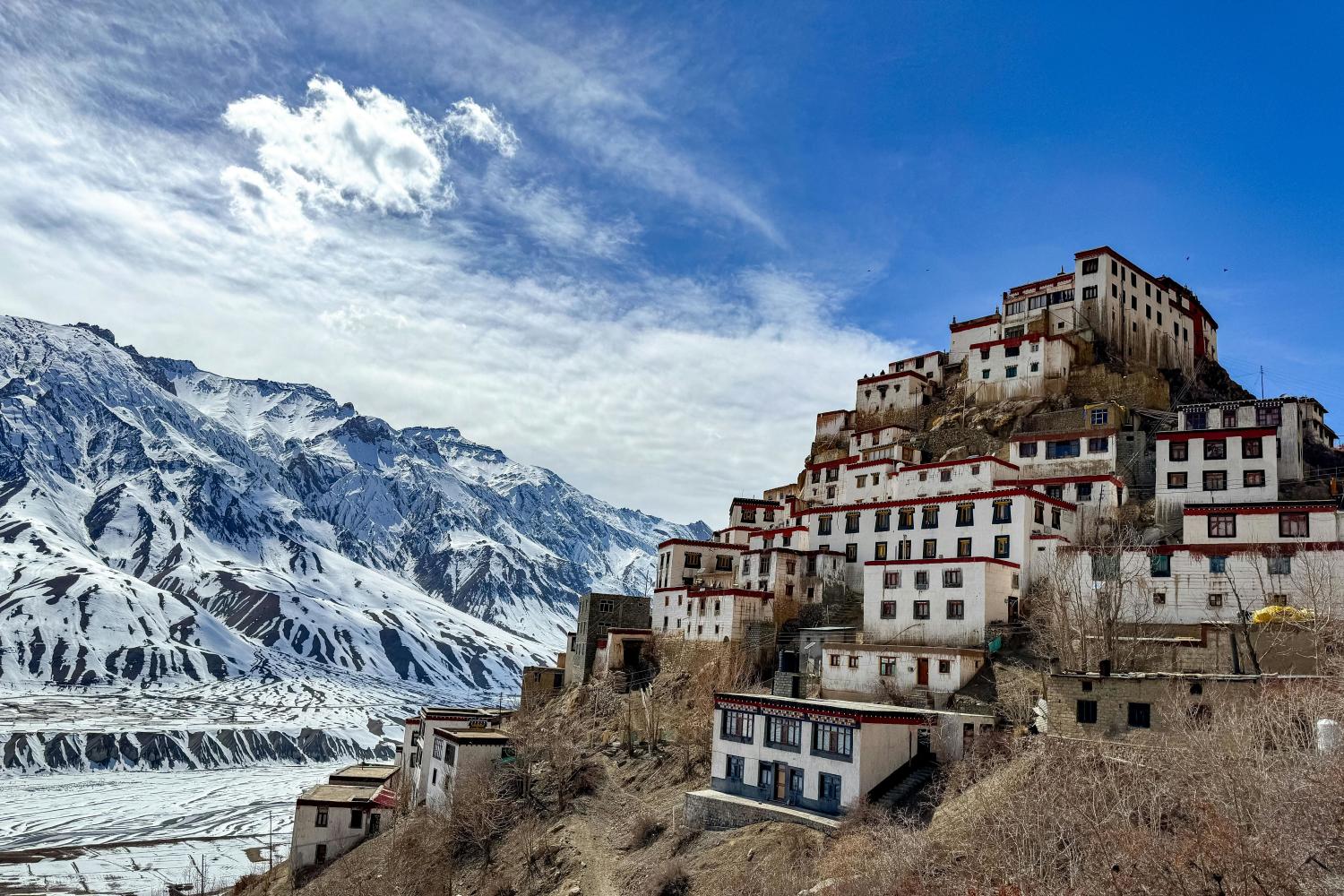A winter trip to Spiti Valley is nothing short of a dream—snow-covered villages, frozen rivers, whitewashed mountains, and landscapes that look like a different world altogether. Known as the cold desert of India, Spiti transforms into a magical winter wonderland from December to March, attracting seasoned travelers, photographers, and adventure lovers. This Winter Spiti Travel Guide covers snow routes, weather updates, must-visit places, and essential tips for a safe and unforgettable journey.
Snow Routes to Spiti in Winter
During winter, most conventional routes to Spiti remain buried under thick layers of snow. The Manali–Rohtang–Kunzum route is completely closed from October to May due to heavy snowfall. The only accessible path to Spiti in winter is the Shimla – Kinnaur – Spiti route, which stays open throughout the year, except during occasional snowstorms.
This route takes you through Narkanda, Rampur, Kalpa, Pooh, and Nako before entering the mesmerizing white beauty of Kaza. Although this road remains officially open, winter driving is challenging. Expect icy patches, slow movement, and occasional delays due to snowfall. Hiring a local 4x4 taxi is the safest option for winter travel.
Winter Weather in Spiti
Winter in Spiti is intense, extreme, and unbelievably beautiful. The temperature can drop to –20°C to –30°C during peak winter nights. Days remain cold but bearable with temperatures around –5°C to 5°C. Most lakes freeze, water pipes turn solid, and electricity can be intermittent. However, this is also the best time to witness Spiti’s pristine beauty—untouched snow, crystal-clear skies, and perfect silence.
Due to the severe cold, homestays become the most reliable accommodation. Locals use traditional heating systems, warm food, and cozy rooms to keep guests comfortable.
Must-Visit Spots in Winter Spiti
Despite the challenging climate, Spiti’s major attractions remain open and are even more breathtaking during winter:
-
Kaza: The main town, covered in snow, offers stunning views of the mountains and a base for winter activities.
-
Key Monastery: Surrounded by snow peaks, this iconic monastery looks picture-perfect in winter. The calmness here feels divine.
-
Langza: Famous for its giant Buddha statue and fossil grounds, Langza becomes a winter paradise with sweeping white landscapes.
-
Hikkim: Home to the world’s highest post office, Hikkim remains accessible in winter depending on snowfall.
-
Komic: One of the highest motorable villages in the world, Komic offers incredible 360° snowy views.
-
Chicham Bridge: Asia’s highest bridge, surrounded by deep gorges and snow-covered cliffs, is a must-visit.
If you’re lucky, winter also offers a chance to spot the rare snow leopard, along with blue sheep and Himalayan foxes.
Tips for a Safe Winter Spiti Trip
-
Always travel in a 4x4 vehicle with an experienced local driver.
-
Stay in homestays for warmth, food, and reliability.
-
Carry thermals, heavy jackets, snow boots, gloves, and lip balm.
-
Keep extra power banks, as electricity can be limited.
-
Acclimatize properly to avoid altitude sickness.


